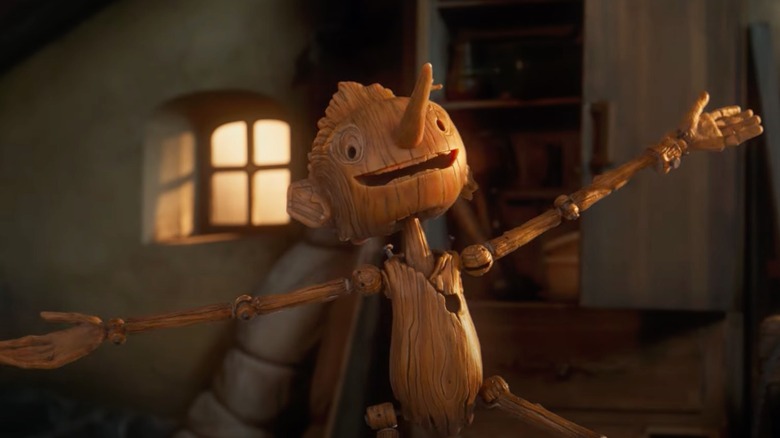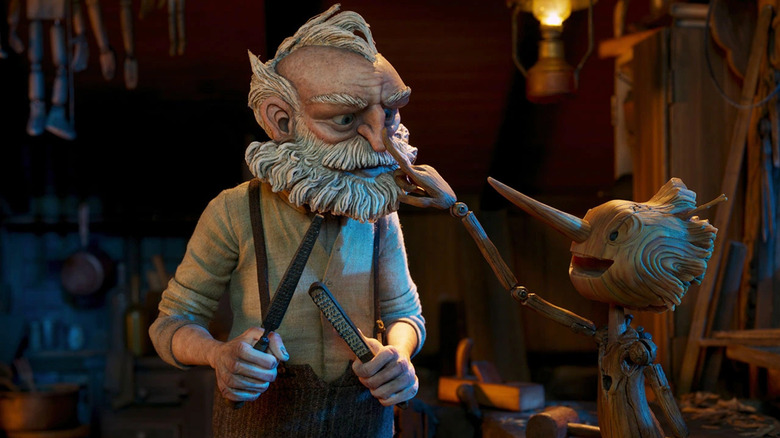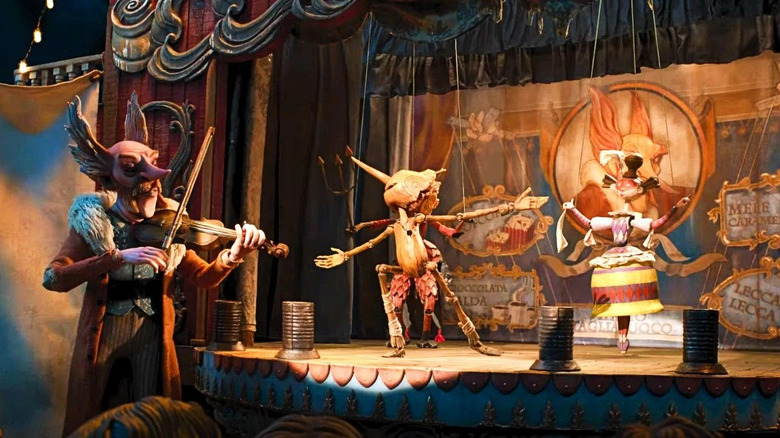Why Guillermo Del Toro Thinks Pinocchio Is One Of The Only Universal Characters In Fiction
Guillermo del Toro and Mark Gustafson's stop-motion "Pinocchio" probably won't be anyone's introduction to the story or the character. Since "The Adventures of Pinocchio" was first written by Carlo Collodi in the 1880s, it has been retold by everyone from Walt Disney to Steven Spielberg. Del Toro and Gustafson's picture won't even be the first "Pinocchio" film released in 2022 (though it is on track to be the best). According to del Toro, this proliferation is a feature, not a bug.
/Film's Jeremy Mathai attended the "Pinocchio" junket, where del Toro discussed why he believes Pinocchio is a "universal" character:
"Even if you haven't read the story, you know the story, or you think you know the story, and therefore you can use them as metaphors for science, for human emotions, for many, many things. "
Indeed, because everyone knows the basics of "Pinocchio," the only proper way to retell it in 2022 is with a new spin. Del Toro and Gustafson's film is set in 1930s Italy during Benito Mussolini's fascist reign. Children growing up under dictatorships is a tale del Toro has told before in "The Devil's Backbone" and "Pan's Labyrinth" (both set in Francoist Spain), so this re-contextualization will help make the story feel apiece with his filmography.
What was it, though, that drew him to Pinocchio in the first place, both as a child and a middle-aged filmmaker? Let's find out.
Two essential fables
At the same junket, del Toro said there were two "essential fables" which "defined" his adolescence: Pinocchio and Frankenstein. The connection here? They're the same story, both about artificially-created beings searching for humanity. The central relationship of both stories is the one shared by creator and creation. Del Toro himself underlined these parallels:
"These may tell you something about my relationship with my dad. But it's this idea that you're thrown into a world that you barely understand and you try to make sense of it as you go, and they're definitely father and son stories that deal with that link and that bond and that shadow and so on and so forth. And they were of primal importance for me and I always failed."
Del Toro's history with these stories helps explain his affinity for outcasts. In "The Shape of Water," he reinvented the 1950s monster movie as a metaphor for being a minority in America and how the marginalized form communities, relationships, and solidarity among each other.
Reimagining modern myths
Like Pinocchio, Frankenstein has been told time and time again on page and screen alike. According to del Toro, there are only "maybe 10" characters who are "capable of being universal and completely adaptable to anything." Pinocchio and Frankenstein's Monster are two, as are Sherlock Holmes and Tarzan. Superheroes are commonly described as "modern myths" but these characters are that even more so; their ubiquity is born out of imagination, not corporate ownership. What imagination did del Toro draw on for this film?
"I thought ['Pinocchio'] could be a great tool to talk about how precious and fragile we are as humans and how much we need each other and how good I find a way to tell that story in a way that was new."
It sounds like del Toro's "Pinocchio" will mold the story towards the themes of "Pan's Labyrinth" (life under fascism) and "The Shape of Water" (community). We'll see just how adaptable the character is when "Pinocchio" has its wide streaming release on Netflix come December 9, 2022.


